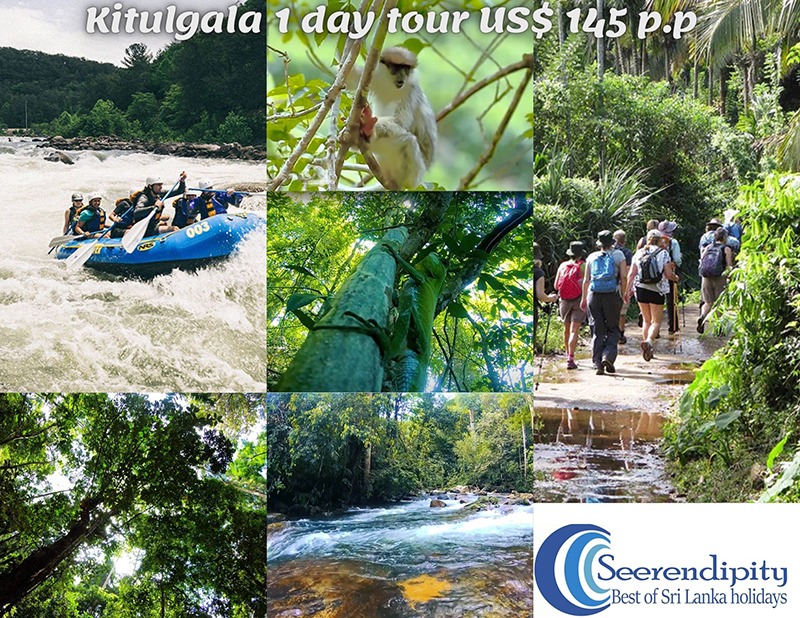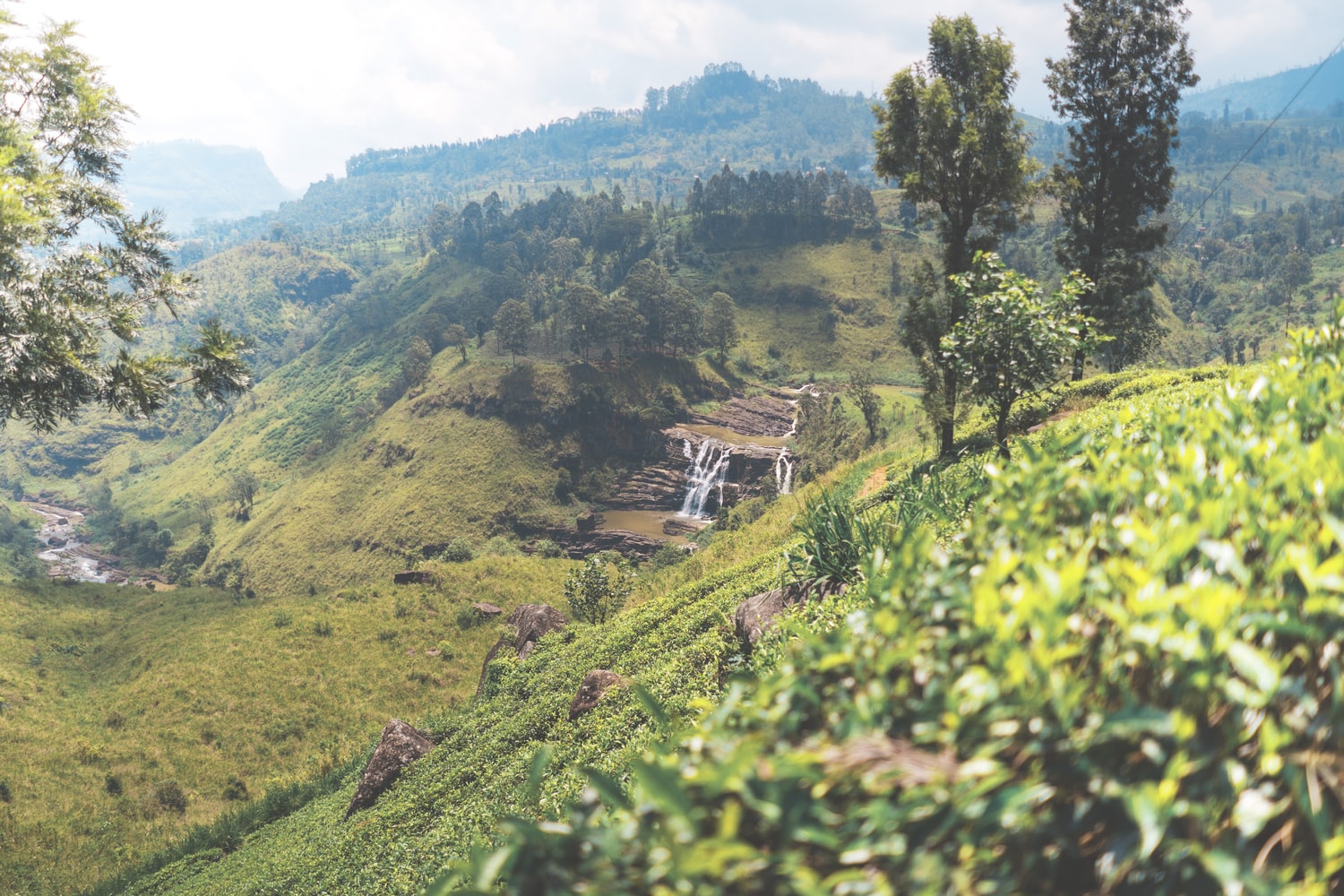Kitulgala visiting places: Makandewa rainforest
If you ask, “What are the most popular Kitulgala visiting places?” The answer is the Kelaniya River and Makandewa Rainforest. Travellers visit the Kelaniya River to experience the thrilling adventure of whitewater rafting. while they visit Makandewa Forest to experience a fauna- and flora-rich rainforest. The forest cover of Makandewa rainforest in Kitulgala spreads over 1155 hectares. Makandewa gets heavy rainfall every year, and it functions as a catchment area in Kitulgala, inducing frequent rain. This untouched rainforest is home to many dozens of species of fauna and flora, some of which are endemic to Sri Lanka. The Makandewa rainforest is especially popular for bird watching in Sri Lanka. The Makandewa rainforest is a part of the majority of Sri Lankan bird-watching tours because it is home to numerous avian fauna species. More than 54 species of birds can be witnessed in the Makandewa rainforest.
Table of Contents
- Kitulgala
- Kitulgala visiting places
- The forest covers Kitulgala
- Kitulgala visiting places: Makandewa rainforest
- Why Makandewa is among the best Kitulgala visiting places?
- The trekking route
- When is the best time to visit Makandewa rainforest Kitulgala?
Kitulgala
Kitulgala is a major tourist attraction in Sri Lanka, which offers a wide range of activities for adventure enthusiasts. By far Kitulgala is the most popular adventure holiday destiunation Sri Lanka. The rugged terrain of Kitulgala with cascading waterfall, rivers, streams, rainforests and the green-capped mountain offers adrenaline-pumping activities such as trekking, hiking, rock climbing, waterfall abseiling, mountain biking, caving, jungle trekking and bird watching. Kitulgala is one of the popular places for Sri Lanka’s one-day trips. It is easy to reach Kitulagal from Colombo and all other major tourist resorts on the west and south coast. Therefore, most tour operators such as Seerendipity tours offer one day tour to Kitulagla with a twst of adventure.
Kitulgala visiting places
- Kelaniya river for Whitewater rafting
- Makandewa forest for hiking, trekking, canoeine
- Beli lena for caving
- Waterfall abseiling
- Kitulgal village for bird watching and mountain biking

The forest covers Kitulgala
Kitulgala has a large tract of forest. It is important to maintain a healthy forest cover in Kitulagla in order to guarantee heavy rainfall in Kitulgala and its surrounding area. Kitulgala had been a laid-back village with a very large farming community until very recently. There has been rapid development in Kitulagla over the last few years, especially due to tourism. At the moment, heavy industry is an important industry for the people in the area, and a large number of people are dependent on it for their income. The recent popularity of Kitulgalhasa and the development of tourism in the area have made a significant improvement in people’s lives. At the same time, it has resulted in some depopulation of the area, resulting in valuable forest cover.
Development has also invaded Kitulagala like most other places in Sri Lanka. There had been a huge development in Kitugla over the last few years and new building has mushroomed in a few areas, mainly along the main road. Therefore, part of its precious forest cover is depleted and the remaining forest cover is also under heavy pressure.
Makahaswa Raforest, which is protected under the Flora and Years Act, is a building with significant natural forest cover in Kitulgala. Makandewa is the biggest rainforest in Kitulgala and is still depleted as a tourist attraction. Makandewa rainforest is a significant forest reserve and offers a fantasic Flora and Fauna Act rainforest and trekking tours in Sri Lanka. The forest reserve is located next to the Kelaniya River, which is the most popular river for whitewater rafting in Sri Lanka. Kitulgala and its significant andng area, as well as the Kelaniya river, are highly dependent on the rainfall induced by the Makandewa forest.
Kitulgala visiting places: Makandewa rainforest
The forest cover of Makandewa spreads over 1155 hectares. Makandewa gets heavy rainfall every year and it functions as a catchment area in Kitulgala, inducing frequent rain. This untouched rainforest is home to many dozens of Fauna and flora; some of them are endemic to Sri Lanka. Makandewa rainforest is especially popular for bird watching in Sri Lanka. It is inhabited by a large number of avian fauna species; therefore, Makandewa rainforest is part of most Sri Lanka bird-watching tours. More than 54 species of birds can be witnessed in Makandewa rainforest.
The award-winning English film “The Bridge on the River Kwai”, which won seven Academy Awards in 1958 was filmed in the backdrop of the Makandewa rainforest. A location within the forest was chosen to film a part of the film. This location was chosen to film the incident, in which the bridge was blown off making the train fall into the river. The reminiscence of the bridge that was specifically built for the film still can be seen at the site.
Why Makandewa is among the best Kitulgala visiting places?
There are few trekking routes in Makandewa Forest. However, the most popular is the trek, which starts from Remnants Bridge. Makandewa rainforest is dense with variegated canopy trees and plants. Why is it that you can see the three canopies created by varying sizes of trees and plants here? They are the forest canopy, the upper canopy, and the lower canopy. The sun’s rays cannot penetrate into the forest through the thick formation of the canopy and upper canopy; therefore, it remains dark even during midday.
The trekking route
The trekking route of the Makandewa forest is fairly easy even though it is a bit of rugged terrain. Comfortable shoes are recommended for jungle trekking. The boulders close to the river and waterfalls as well as the boulders around the natural pool are very slippery. So, be careful when you walk on the boulders.
The Kelaniya River flows through the jungle and it creates a natural pool with crystal-clear water on its way through the jungle. The travellers can also witness a few waterfalls within the forest. The forest offers many opportunities for trekking, hiking, whitewater rafting, bird watching, and canoeing.
When is the best time to visit Makandewa rainforest Kitulgala?
During the monsoon season, there can be frequent heavy rain in the forest. The highest rainfall reported in the forest was from October to April (during the southwest monsoon). The rainfall considerably lowers during the 6 months from November to April. Try to plan your visit to Makandewa forest from December and February or August to September, during these periods the forest remains dry most of the time.








We were in Sri Lanka in 2018. I and my husband went to kitulgala on a water rafting tour from Negombo. It was a day trip and after the water rafting we visited a rainforest. I don’t know whether it was this rainforest however, it was not that much interesting. We were not able to see many birds or other animals there.